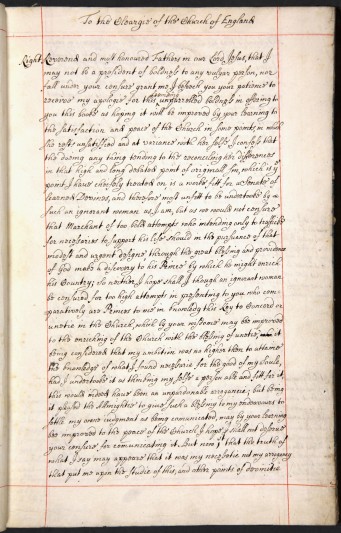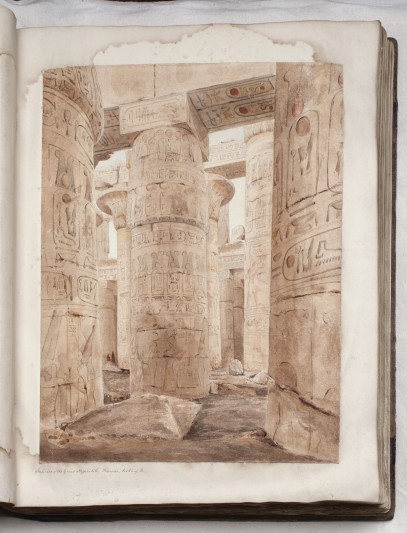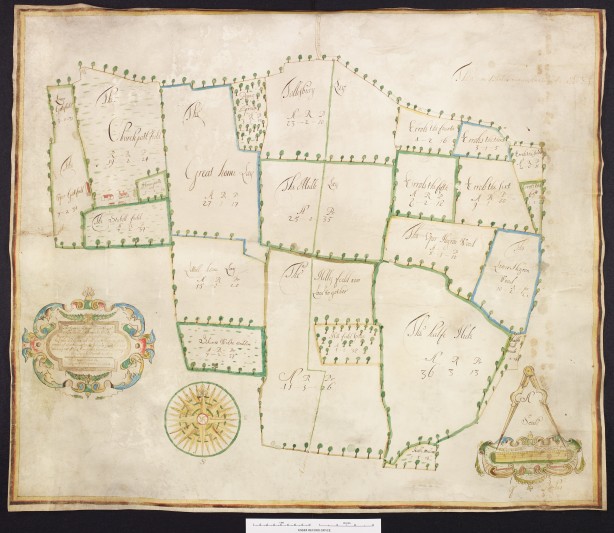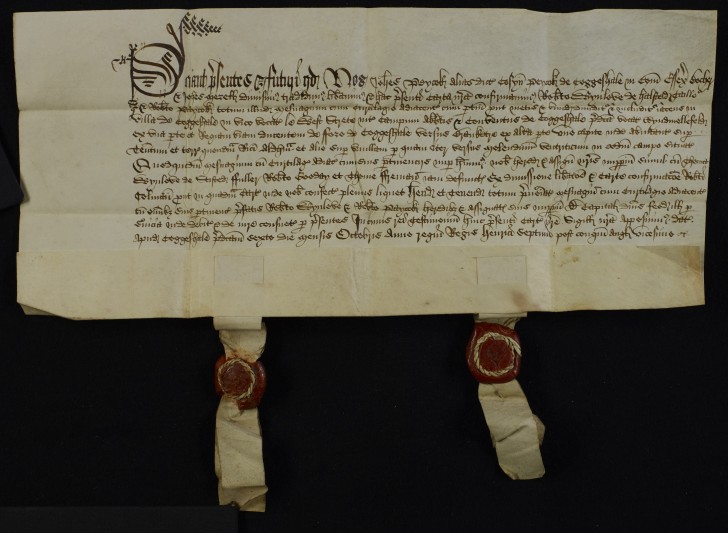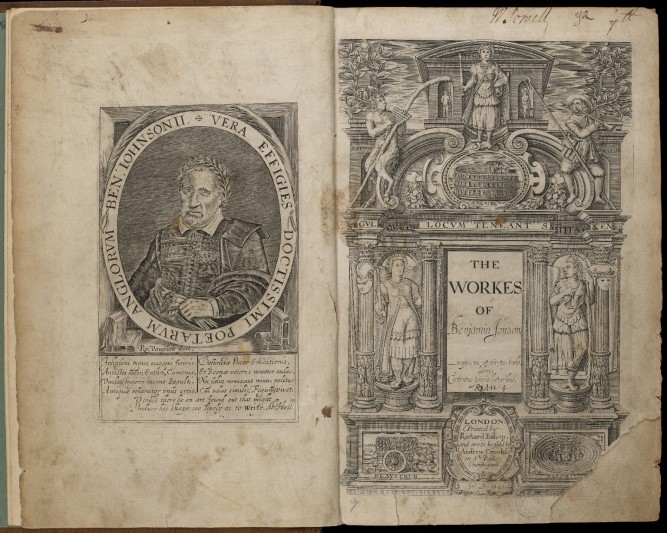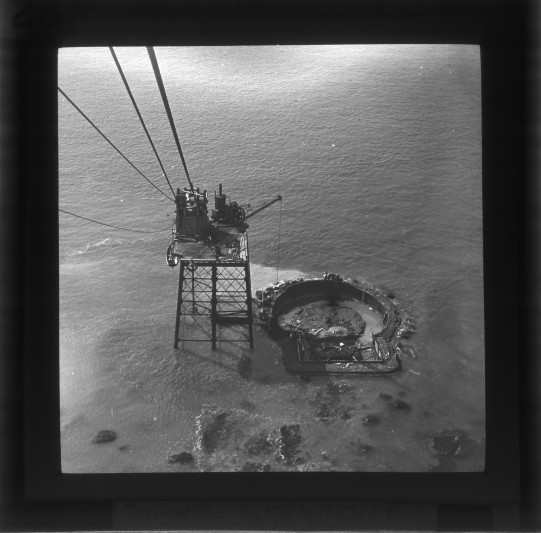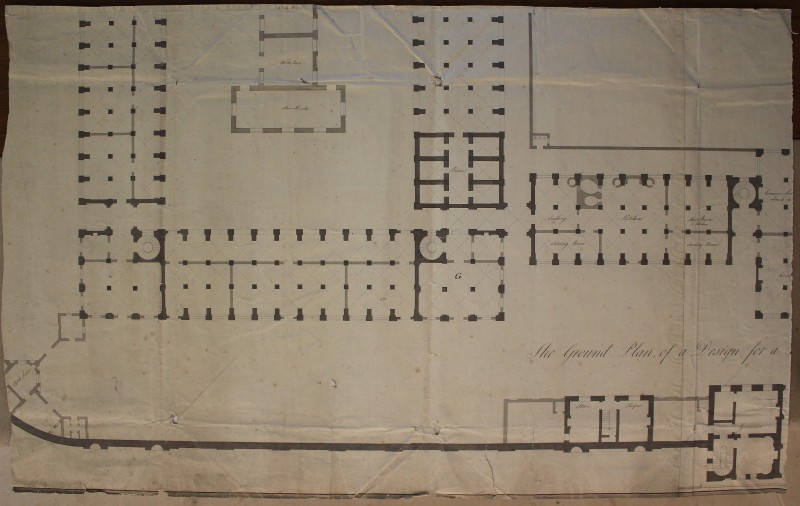The treatise is written in a single neat hand, laid out as if to be ready for the press and preceded by a spiritual autobiography, which identifies the author as ‘an Obedient Daughter and true Member of the Church of England’ and mentions her contacts with the
Search FNL grants since 1931
Lord Byron’s copy of the first Barnes Latin edition of the Poems of Anacreon (Cambridge, 1705) was given as a gift and inscribed to him by Leigh Hunt.
‘Sold to the Griffith Institute!’: on 9 May 2017 the Griffith Institute acquired at auction at Sotheby’ an album of watercolours, drawings and tracings of Egypt by George Lloyd.
Drawn in 1664 by Robert Whi(s)tpaine from a survey of 1659 by Ralph Dowcett, the plan shows a farm in ‘Tollesbury’ (recte Tolleshunt D’Arcy) owned by the Henry Smith Charity. This charity was established in 1628 under the will of Henry Smith and benefitted a large number of parishes in Essex and elsewhere, and the title of this map names in particular the parish of Southover in East Sussex. ERO already holds large numbers of manuscript estate maps. Quite apart from their aesthetic value, they underpin many studies of local history and geography in the early modern period. This is a competent and attractive example, of special interest firstly because little is known of the surveyor, Ralph Dowcett, although he may have come from the Terling area of Essex
A collection of 11 late medieval deeds (1427 to 1574) from Coggeshall. Formerly unknown to historians, the deeds appeared for sale at Sotheby’s on 23 May at an estimate of £3,000 to £5,000 which no doubt reflected the presence in the deeds of members of the Paycocke family, relatives of the famous clothier Thomas Paycocke of Coggeshall (d. 1518) who built Paycocke’s House, now in the care of the National Trust. The deeds record the names of a great many other people from Coggeshall and the surrounding towns and villages, including clothworkers, and illustrate a network of economic and social relationships and property holdings associated with the cloth industry.
Ben Jonson, Workes, 2nd edn., 1640, vol. 1, with extensive near-contemporary manuscript annotations to the play, Epicoene or The Silent Woman.
Jonson (1572-1637) Ben Jonson (1572-1637) is arguably the most important writer of the English Renaissance after Shakespeare, having lived and worked in an age of great social change that produced some of the finest works of English literature. This extraordinarily rare volume is the only known example of a document showing how a play by Ben Jonson was prepared for performance. Material that tells us about the performance of pre-Restoration plays is extremely scarce. This volume occupies a unique place among surviving materials because of the nature and range of its annotations to Epicoene, or The Silent Woman – including stage directions, details of props, and textual corrections – which collectively do not fall into any category previously known to scholars of 17th-century theatre. The volume is of outstanding interest to the study of English theatrical history. A product of a period when plays were seen not as finished pieces, but as perpetual works in progress, this volume has the potential to change scholars’ understanding of how plays were transmitted from the page to the stage and back again.
The collection contains 71 lantern slides showing the construction of the lighthouse, from the building of a coffer-dam to retain the sea to the lighthouse-keeper relaxing in his new quarters. The name of the photographer is not known, but it was probably the designer and builder Sir Thomas Matthews (1849-1930). Matthews was born in Penzance, the son of the Borough Surveyor. From 1868 to 1871 he assisted his father in providing drinking water for Penzance and in constructing the sea and harbour defences. For the following two years he practised as an architect and surveyor in Penzance, and in 1874 entered the employment of the United Kingdom's lighthouse service, Trinity House, as an assistant engineer; he succeeded to the office of Engineer-in-Chief in 1892.
This comprises two works: The New Testament of our Lord and Saviour Jesus Christ. Newly translated out of the originall Greek: and with the former translations diligently compared and revised, by his Majesties speciall commandment, imprinted at London by Robert Barker, printer to the Kings most excellent Majestie, and by the assignes of John Bill, 1640; bound in the same volume is The Whole booke of Psalmes collected into English meter by Tho. Sternhold, John Hopkins, W. Whittingham and others, printed in London for the Company of Stationers, 1641.
Both volumes are worthy additions to the collections in their own right, but it is the binding of the two together that really sets them apart as a stunning example of the genre. This binding is in 17th-century English needlework, the sides and back being decorated with a floral pattern worked in coloured silks, silver wire and spangles on a background of white satin. On the front cover a central large lily in a pot is depicted in stump-work with smaller flowers and leaves below and two insects above. The top petals of the lily can be folded back to show the petals behind. A different central flower is on the back cover. The colours are not faded and the back cover is especially fresh.
This plan's provenance strongly suggested that it was a preliminary design by Ignatius Bonomi for the Durham Assize Courts and Durham Gaol, which would date it to around 1811. Although later plans of the prison and courts survive in our collection, these date from the mid-19th century onwards. Ignatius Bonomi's earliest scheme as a young architect, completed when he was only 24 years old, was for the Durham Assize Courts (1811), in Elvet, Durham City, this sheet possibly being part of Bonomi's preliminary design for the project. The curved wall on this plan, where the watch house is located, was not executed, that part of the site being squared off by the Governor's House/Judges' Lodgings. The executed Assize Courts comprises a long, low building of considerable dignity, still in use as the Crown Courts.
The Magna Carta has been called ‘a sacred text, the nearest approach to an irrepealable "fundamental statute" that England has ever had’ (Pollock and Maitland, History of English Law), and is the most celebrated legal document in the English-speaking world. This engraving was the work of John Pine (1690-1756), publisher, print- and map-seller, as well as Bluemantle Pursuivant at the College of Arms, and Engraver to the King's Signet and Stamp Office.
The 1215 issue of Magna Carta now in the British Library (BL Ci), from which the engraving is taken, was badly damaged by fire after the engraving was made; thus the Pine engraving is highly significant. Only four 1215 documents of Magna Carta survive in the country: two at the British Library (including Ci), one at Salisbury Cathedral and one at Lincoln Cathedral. Canterbury is one of the five ‘Magna Carta towns’ because of Archbishop Stephen Langton’s association with the issue of the charter, and it has been suggested that BL Ci may be the Magna Carta originally held at Canterbury Cathedral, straying from the collections after the Reformation. It is highly appropriate to be able to ‘bring home’ this copy of Magna Carta and we are grateful to the Friends of the National Libraries for helping us to do so.
